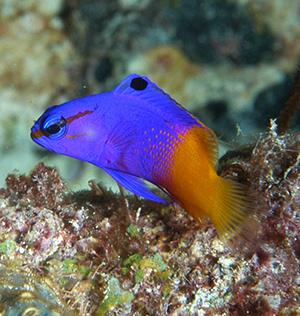New research on the predatory nature of lionfish, the invasive species that is decimating native fish populations in parts of the Caribbean Sea and Atlantic Ocean, indicates that lionfish are not just a predator, but more like “The Terminator.”
Kurt Ingeman, a doctoral candidate in the Department of Integrative Biology within the College of Science, presented the findings this week at the annual meeting of the Ecological Society of America (ESA), the premier professional society of ecologists in the country. They were based on field experiments done with lionfish in the Bahamas, show further damage this species can do. The work was funded by the National Science Foundation and the Cape Eleuthera Institute of the Bahamas.
Most native predatory fish are attracted to prey when their numbers are high, successful attacks are easy and minimal energy is needed to catch and eat other fish, according to previous research by Michael Webster, a science alumnus who earned his Ph.D. in coral reef fish ecology. As the population of prey diminishes, native predators often go where the fishing is better.
In comparison, Lionfish appear to stay in one area even as the numbers of prey diminish and sometimes eat the population to local extinction, based on Ingeman’s new research. Lionfish have unique characteristics that make this possible. Like “The Terminator,” they simply will not stop until the last of their prey is dead.
“Lionfish seem to be the ultimate invader,” said Ingeman. “Almost every new thing we learn about them is some characteristic that makes them a more formidable predator. And it’s now clear they will hunt successfully even when only a few fish are present."
"This behavior is unusual and alarming.”
Ingeman conducted his research on replicated natural reefs in the Bahamas, measuring mortality of a particular prey species, the fairy basslet – a popular aquarium fish and a common prey of lionfish.
Predation rates were compared between reefs with the invasive lionfish and reefs with native predators alone, and across a range of population levels of the fairy basslet. It found that at a low population density of this prey fish, the rate of mortality with lionfish present was four times higher than that caused by native predators alone, such as medium-sized groupers or trumpet fish.





